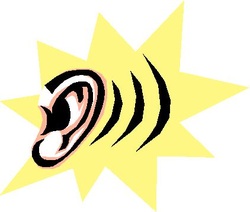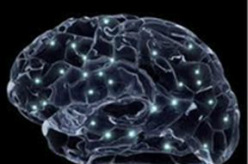
www.actmindfully.com.au/about-act/
I have just returned from a three day training in Compassion Focused Therapy (CFT) with Professor Paul Gilbert who founded this ground breaking therapy. CFT uses understandings of the evolution of our brain and how the brain works to harness a powerful resource we all have within us. This resource will allow you to manage negative emotions and transform the way you relate to yourself and others. What is this resource? You guessed it - Compassion.
Three brain systems
In CFT, we learn that our brains have evolved to have three different systems to help us manage our emotions and feel better. They are:
1. The “threat system” which puts us into the mode of threat detection and self protection. It is associated with feelings of anger, anxiety, disgust, blame, shame and sadness.
2. The “reward system” which involves excitement and craving and feeling better by pursuing, achieving and consuming.
3. The “caring soothing” system which involves compassion and kindness and facilitates calming of distress and feeling safe through connecting and relating with nurturing others.
These systems operate in different areas of the brain, and have different neural pathways which involve different neurotransmitters. This leads to particular patterns of feelings, body sensations, thoughts and behaviours associated with each system. They will all feel different in the body and we can all activate them by using our imagination.
Choice
We all have access to these different systems at any time. However, our default state is to be in the “threat system”. Our western society gives us the message that the way to solve this and be happy is to shift into the drive system of competing, consuming and achieving. CFT highlights the alternative system we have access to, of caring and kindness to self and others. With practice, we can learn to master the art of choosing which system we activate.
For example, we can learn to shift modes from defensiveness and anger to self soothing with compassion and being kind to ourselves. This will calm us down so we are not so overwhelmed, and can then engage with the world in a way we aspire to be. If our way of self soothing is to routinely shift into the reward system of compulsive eating or working, we can train ourselves to shift into the mode of compassionate behaviours and thoughts towards ourselves.
In some situations, we do want to be protecting or achieving. The question is, if you could develop the skills, which one would do you choose to activate - which would serve you best in which situations? Which system offers you the most benefit when dealing with the challenges of life?
How to develop skills so you can choose
We have the capacity for great cruelty, aggression as well as caring and kindness. What we focus on can shape our brain as it will activate certain brain circuits. For those of you who have grown up in a home characterised by criticism, any form of abuse (or absence of nurturing, protection or guidance), the compassionate system may be under-developed, with the threat system being highly developed. For example, you may have become highly self critical as a way of monitoring yourself to avoid stirring the anger of abusive parents. This helped you to survive and is not your fault.
The good news is that because the brain is neuroplastic you can strengthen the caring, connecting system by practising compassionate and loving kindness meditations. And this is what CFT is all about.
Wisdom, Strength and Commitment
The compassionate resource of CFT is not wishy washy, weak or self indulgent. It is a powerful presence that combines three attributes - wisdom, strength and a commitment to your well being:
Wisdom
Your compassionate resource has the wisdom to know that our minds are (as Professor Gilbert says) “tricky....complex and chaotic, dangerous and crazy”. We have evolved to crave, to love, to grieve, to fear, to be defensive and aggressive, to compare and strive to be better than others, with a negativity bias to noticing deficiencies and threats. And our brains seek permanence in a world of impermanence where we will ultimately lose everything we care about.
Moreover, we inhabit a fragile body, and are subject to all kinds of random adversities and health issues. And who we are is a function of the genes we inherited and the environment we grew up in – both out of our control and not our fault. Your compassionate resource knows all of this and that we are all trying to do the best we can with what we have in the midst of this challenging life.
Strength
Your compassionate resource comes from a grounded, present centred place in the body which is strong. It is solid, like a mountain. It is a resilient part of you that has been able to tolerate great distress and has persevered in the face of many difficulties.
Commitment to your well being and happiness
Your compassionate resource is totally committed to be as helpful to you and others as possible. It has a genuine desire for you to have a joyful life and to nurture your personal growth and inner peace. It delights in the idea of you being free from suffering. It understands and validates your feelings.
Compassion Focused Therapy Techniques
CFT involves developing your compassionate resource and then learning (through particular therapeutic exercises) to identify, understand and disengage from the part of us that criticises and puts us down (i.e. the “Inner Critic”). This approach differs from some other therapies which set up a struggle with the Inner Critic by trying to get rid of it or argue with it.
As the compassionate resource has the powerful combination of wisdom, strength and commitment to your well being, it is the better authority when it comes to running your life. So it is the authority you can trust when it comes to deciding who to believe – the self critical thoughts that deflate you, or the kind thoughts that enable you to engage fully with whatever life throws at you.
CFT and ACT
CFT melds very well with Acceptance and Commitment therapy (ACT) which also aims at detachment from negative thinking so you can do what matters to you. In CFT, compassion is not to soothe away negative feelings, but to help you be with the pain that is inevitable in life. As with ACT, this allows you to engage fully with life in the midst of painful feelings, so that you are not overwhelmed by what is happening at the time, and you can take life affirming actions.
Surprise yourself
The compassionate pathways in the brain can be activated by using your imagination (in guided visualisations), with a loving body posture, tone of voice and facial expression and kind words to get into a state of compassion, the way a “method actor” would. Repeatedly activating these pathways with daily practice will lead to you developing a resource that may surprise you one day when you hear a loving kind inner voice soothing you at a time of distress. It will seem like a voice, coming from out of nowhere, that is wise, strong, and committed to helping you and nurturing your personal growth.
What if I can’t do it?
For many of you, allowing yourself to receive compassion will be very challenging. You may feel you do not deserve kindness and compassion. Do not give up, as repeated practice will eventually over ride old learning. You may have to fake it until you make it - one of the few times it’s appropriate! As a start, rather than sending yourself peace and happiness, Professor Gilbert suggested the words “May the part of me that resists compassion for myself find peace”.
Try this for a couple of weeks, just three or four minutes a day and then re-evaluate. A good time is just before sleep and upon awakening – a great way to start your day. You may also consider seeing a therapist to help you with this if you find yourself struggling.
Free audio guides
I invite you to use my free loving kindness meditation mp3 to guide you in developing your own compassionate resource and begin to transform your relationship with yourself and others. For additional free audios to help you develop compassion, see Paul Gibert's , Kristen Neff's or Chris Germer's websites on compassion. For even more free loving kindness audios by a leading psychology professor who has done ground-breaking research into how love and other positive emotions enhance your life, go to Dr Barbara Fredrickson's website here.
Free e-book on developing self compassion
Russ Harris has developed a guide to developing self compassion.
I have just returned from a three day training in Compassion Focused Therapy (CFT) with Professor Paul Gilbert who founded this ground breaking therapy. CFT uses understandings of the evolution of our brain and how the brain works to harness a powerful resource we all have within us. This resource will allow you to manage negative emotions and transform the way you relate to yourself and others. What is this resource? You guessed it - Compassion.
Three brain systems
In CFT, we learn that our brains have evolved to have three different systems to help us manage our emotions and feel better. They are:
1. The “threat system” which puts us into the mode of threat detection and self protection. It is associated with feelings of anger, anxiety, disgust, blame, shame and sadness.
2. The “reward system” which involves excitement and craving and feeling better by pursuing, achieving and consuming.
3. The “caring soothing” system which involves compassion and kindness and facilitates calming of distress and feeling safe through connecting and relating with nurturing others.
These systems operate in different areas of the brain, and have different neural pathways which involve different neurotransmitters. This leads to particular patterns of feelings, body sensations, thoughts and behaviours associated with each system. They will all feel different in the body and we can all activate them by using our imagination.
Choice
We all have access to these different systems at any time. However, our default state is to be in the “threat system”. Our western society gives us the message that the way to solve this and be happy is to shift into the drive system of competing, consuming and achieving. CFT highlights the alternative system we have access to, of caring and kindness to self and others. With practice, we can learn to master the art of choosing which system we activate.
For example, we can learn to shift modes from defensiveness and anger to self soothing with compassion and being kind to ourselves. This will calm us down so we are not so overwhelmed, and can then engage with the world in a way we aspire to be. If our way of self soothing is to routinely shift into the reward system of compulsive eating or working, we can train ourselves to shift into the mode of compassionate behaviours and thoughts towards ourselves.
In some situations, we do want to be protecting or achieving. The question is, if you could develop the skills, which one would do you choose to activate - which would serve you best in which situations? Which system offers you the most benefit when dealing with the challenges of life?
How to develop skills so you can choose
We have the capacity for great cruelty, aggression as well as caring and kindness. What we focus on can shape our brain as it will activate certain brain circuits. For those of you who have grown up in a home characterised by criticism, any form of abuse (or absence of nurturing, protection or guidance), the compassionate system may be under-developed, with the threat system being highly developed. For example, you may have become highly self critical as a way of monitoring yourself to avoid stirring the anger of abusive parents. This helped you to survive and is not your fault.
The good news is that because the brain is neuroplastic you can strengthen the caring, connecting system by practising compassionate and loving kindness meditations. And this is what CFT is all about.
Wisdom, Strength and Commitment
The compassionate resource of CFT is not wishy washy, weak or self indulgent. It is a powerful presence that combines three attributes - wisdom, strength and a commitment to your well being:
Wisdom
Your compassionate resource has the wisdom to know that our minds are (as Professor Gilbert says) “tricky....complex and chaotic, dangerous and crazy”. We have evolved to crave, to love, to grieve, to fear, to be defensive and aggressive, to compare and strive to be better than others, with a negativity bias to noticing deficiencies and threats. And our brains seek permanence in a world of impermanence where we will ultimately lose everything we care about.
Moreover, we inhabit a fragile body, and are subject to all kinds of random adversities and health issues. And who we are is a function of the genes we inherited and the environment we grew up in – both out of our control and not our fault. Your compassionate resource knows all of this and that we are all trying to do the best we can with what we have in the midst of this challenging life.
Strength
Your compassionate resource comes from a grounded, present centred place in the body which is strong. It is solid, like a mountain. It is a resilient part of you that has been able to tolerate great distress and has persevered in the face of many difficulties.
Commitment to your well being and happiness
Your compassionate resource is totally committed to be as helpful to you and others as possible. It has a genuine desire for you to have a joyful life and to nurture your personal growth and inner peace. It delights in the idea of you being free from suffering. It understands and validates your feelings.
Compassion Focused Therapy Techniques
CFT involves developing your compassionate resource and then learning (through particular therapeutic exercises) to identify, understand and disengage from the part of us that criticises and puts us down (i.e. the “Inner Critic”). This approach differs from some other therapies which set up a struggle with the Inner Critic by trying to get rid of it or argue with it.
As the compassionate resource has the powerful combination of wisdom, strength and commitment to your well being, it is the better authority when it comes to running your life. So it is the authority you can trust when it comes to deciding who to believe – the self critical thoughts that deflate you, or the kind thoughts that enable you to engage fully with whatever life throws at you.
CFT and ACT
CFT melds very well with Acceptance and Commitment therapy (ACT) which also aims at detachment from negative thinking so you can do what matters to you. In CFT, compassion is not to soothe away negative feelings, but to help you be with the pain that is inevitable in life. As with ACT, this allows you to engage fully with life in the midst of painful feelings, so that you are not overwhelmed by what is happening at the time, and you can take life affirming actions.
Surprise yourself
The compassionate pathways in the brain can be activated by using your imagination (in guided visualisations), with a loving body posture, tone of voice and facial expression and kind words to get into a state of compassion, the way a “method actor” would. Repeatedly activating these pathways with daily practice will lead to you developing a resource that may surprise you one day when you hear a loving kind inner voice soothing you at a time of distress. It will seem like a voice, coming from out of nowhere, that is wise, strong, and committed to helping you and nurturing your personal growth.
What if I can’t do it?
For many of you, allowing yourself to receive compassion will be very challenging. You may feel you do not deserve kindness and compassion. Do not give up, as repeated practice will eventually over ride old learning. You may have to fake it until you make it - one of the few times it’s appropriate! As a start, rather than sending yourself peace and happiness, Professor Gilbert suggested the words “May the part of me that resists compassion for myself find peace”.
Try this for a couple of weeks, just three or four minutes a day and then re-evaluate. A good time is just before sleep and upon awakening – a great way to start your day. You may also consider seeing a therapist to help you with this if you find yourself struggling.
Free audio guides
I invite you to use my free loving kindness meditation mp3 to guide you in developing your own compassionate resource and begin to transform your relationship with yourself and others. For additional free audios to help you develop compassion, see Paul Gibert's , Kristen Neff's or Chris Germer's websites on compassion. For even more free loving kindness audios by a leading psychology professor who has done ground-breaking research into how love and other positive emotions enhance your life, go to Dr Barbara Fredrickson's website here.
Free e-book on developing self compassion
Russ Harris has developed a guide to developing self compassion.












 RSS Feed
RSS Feed